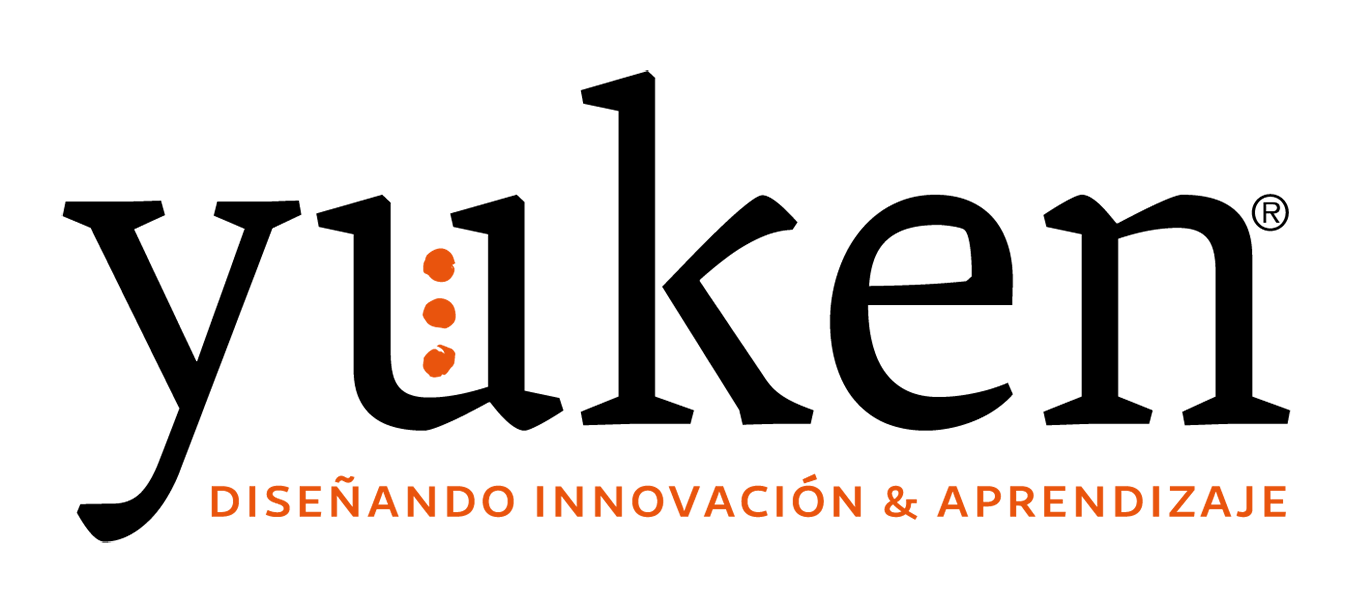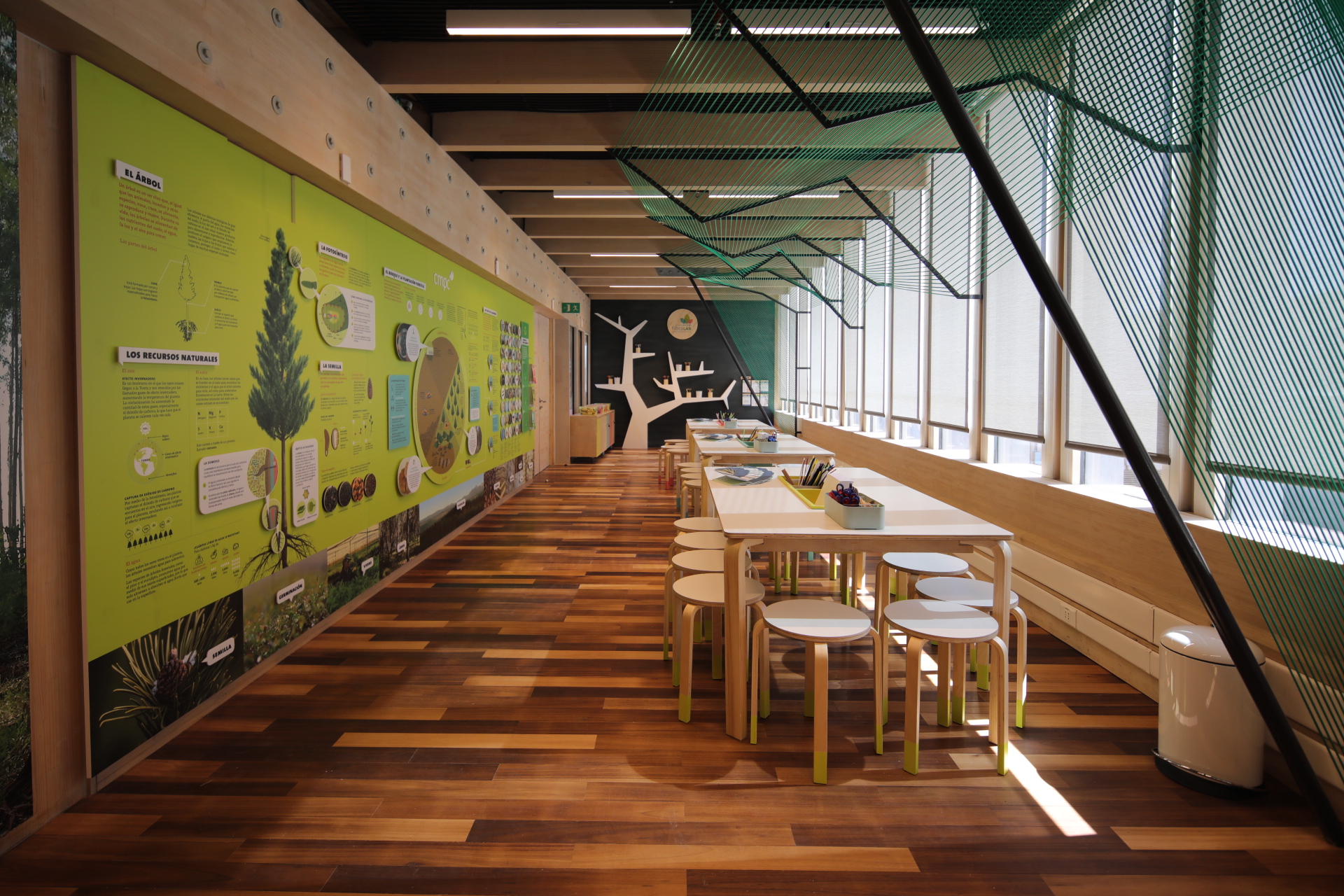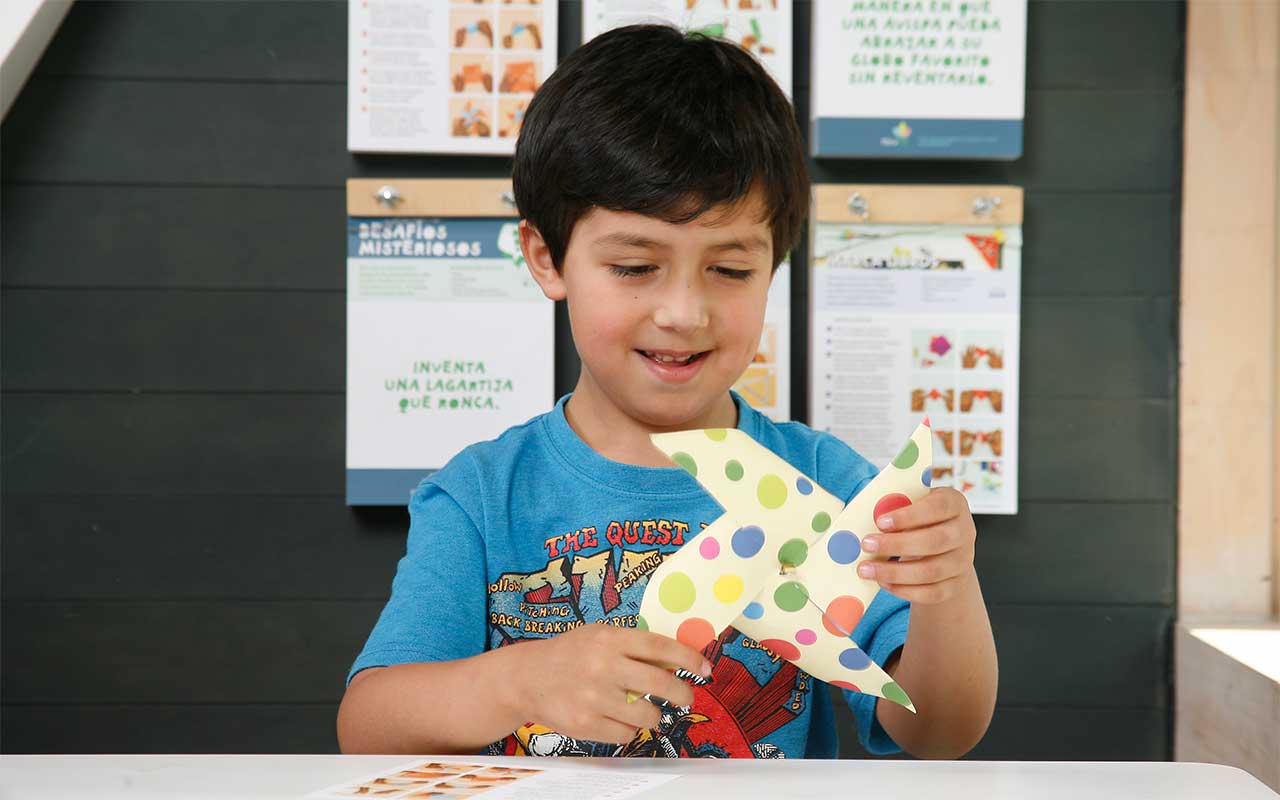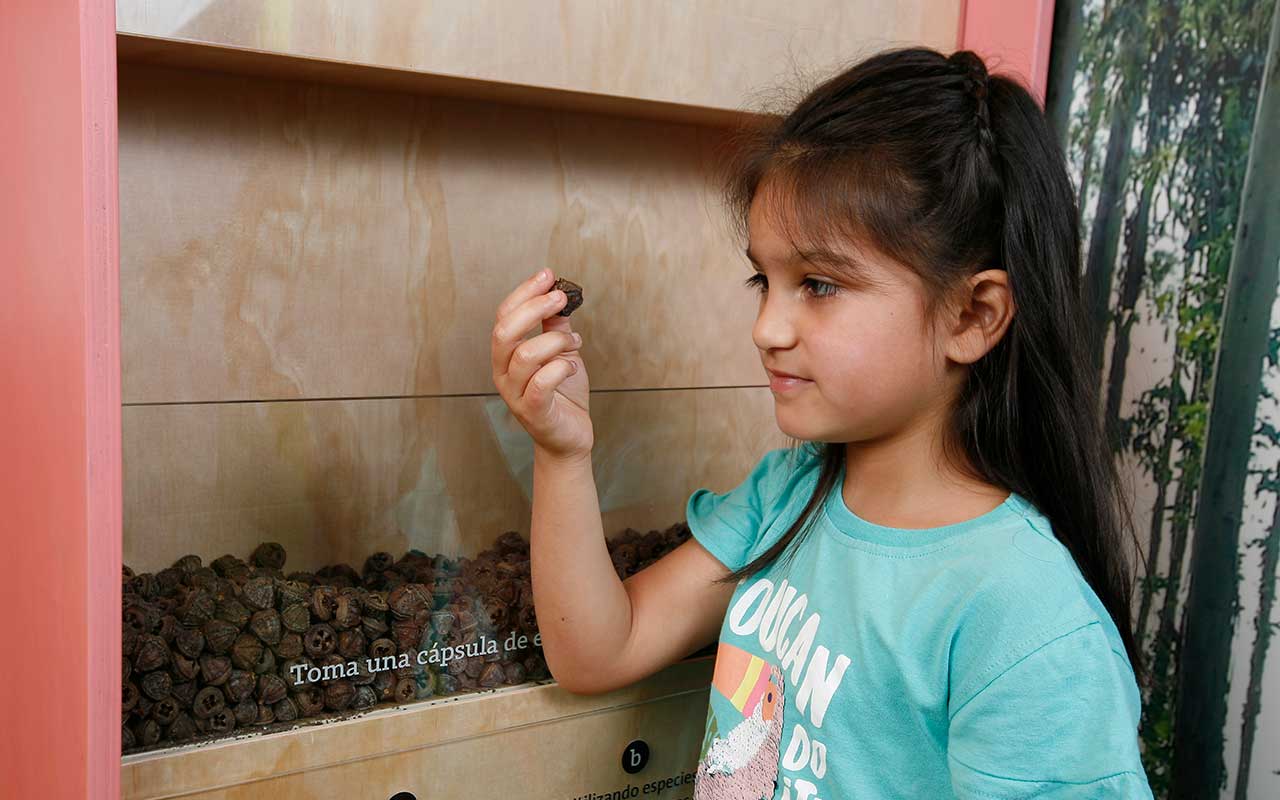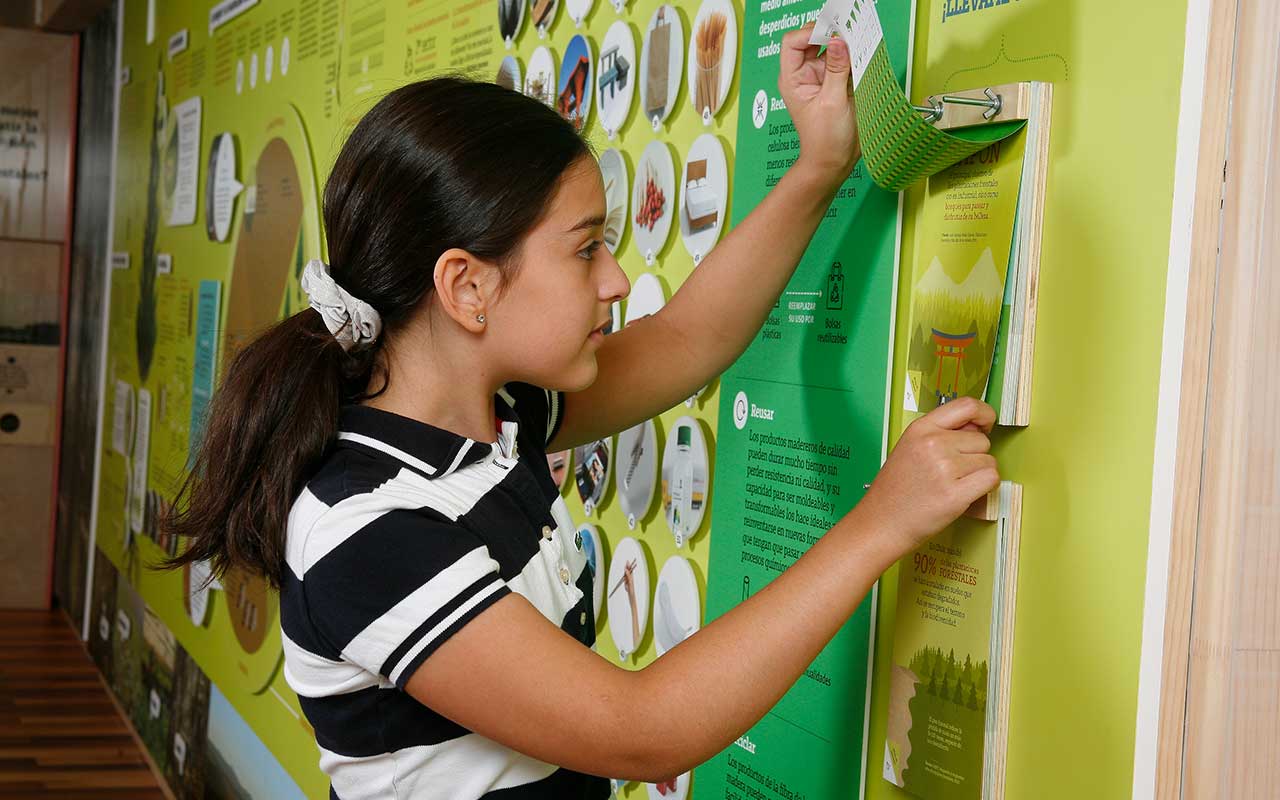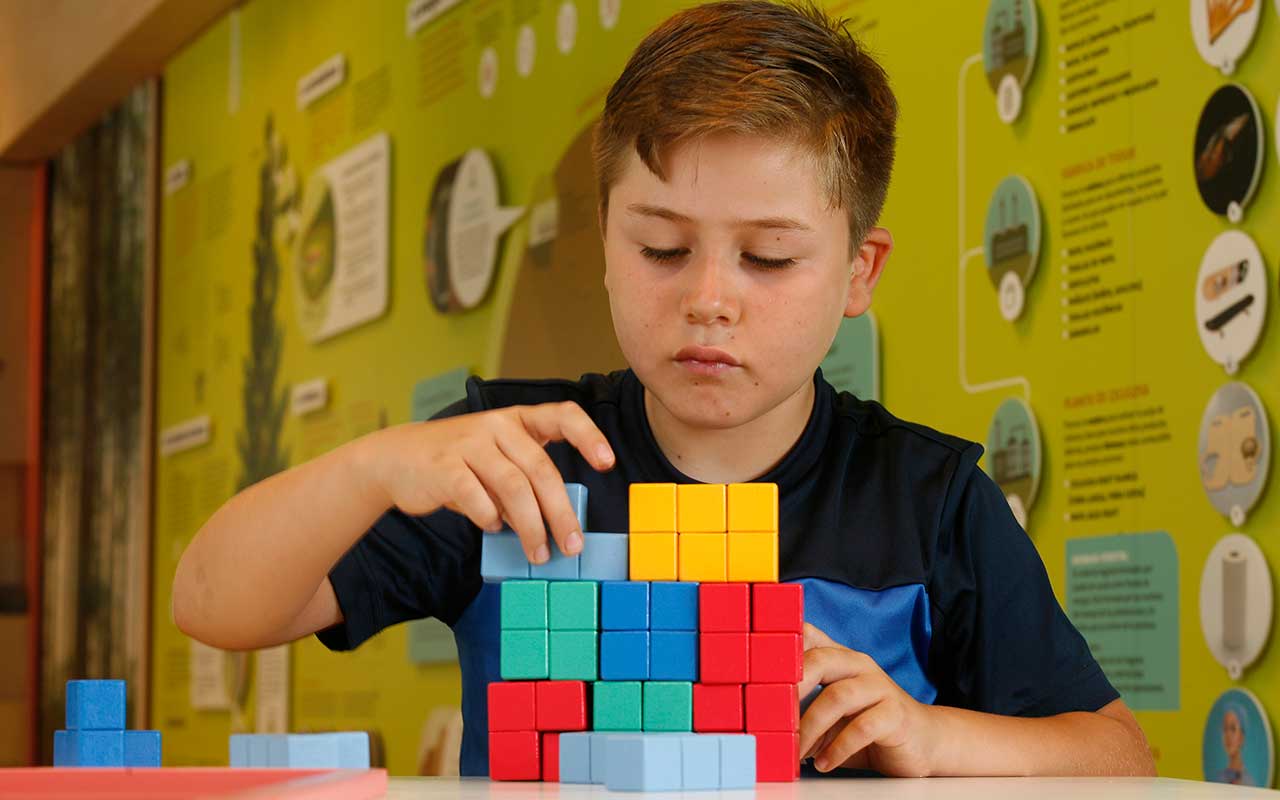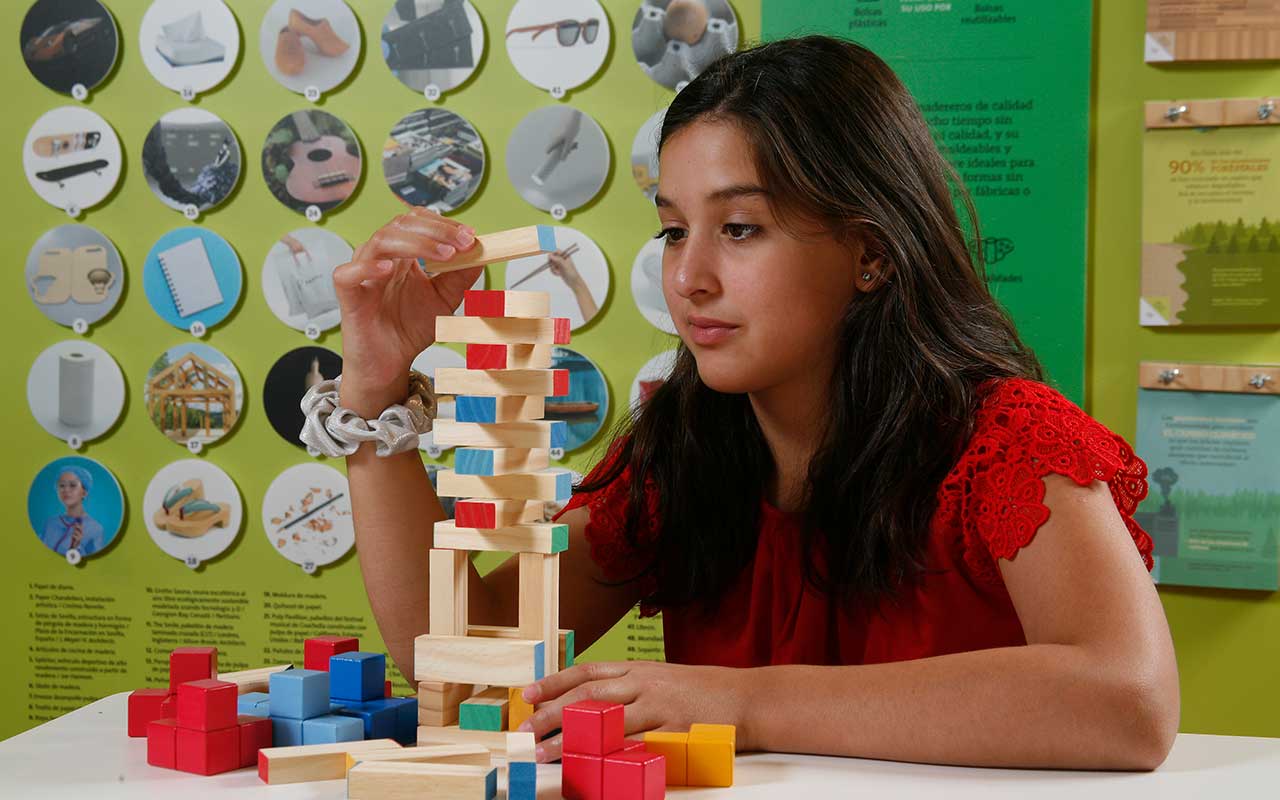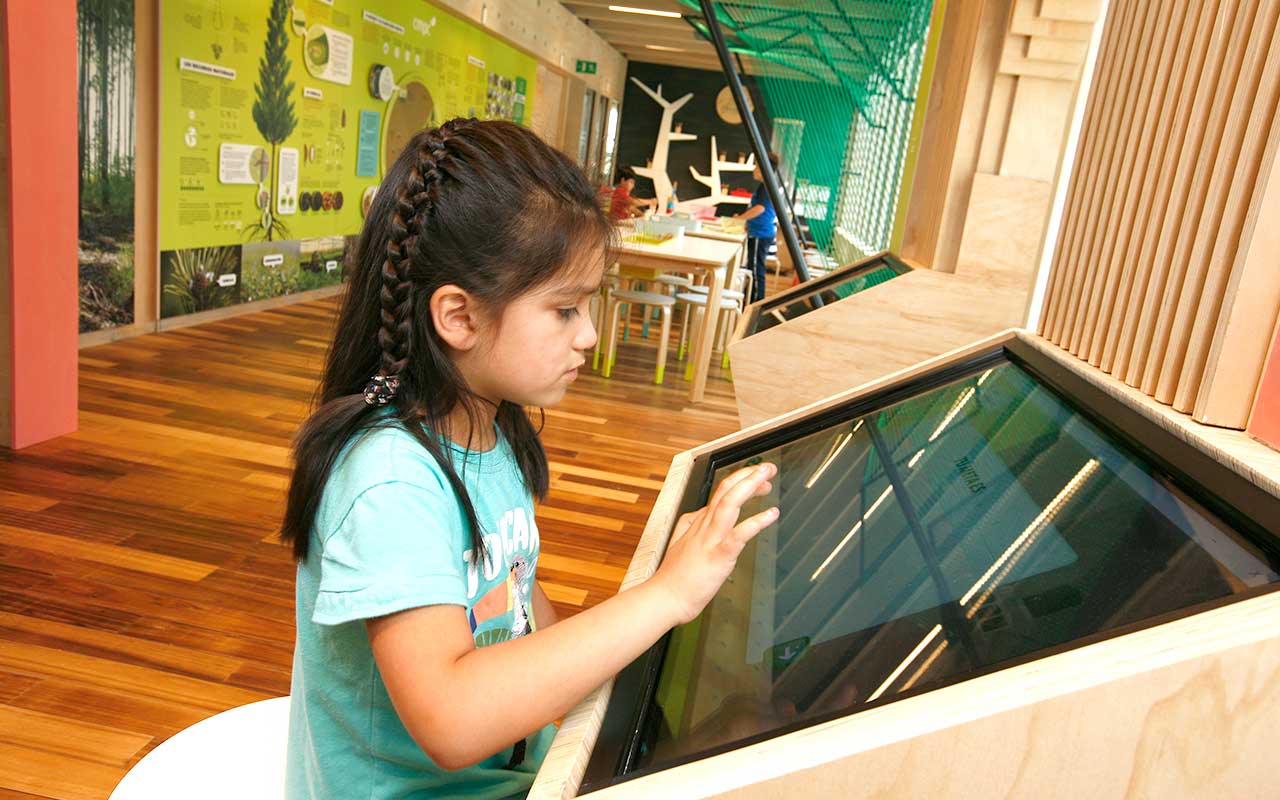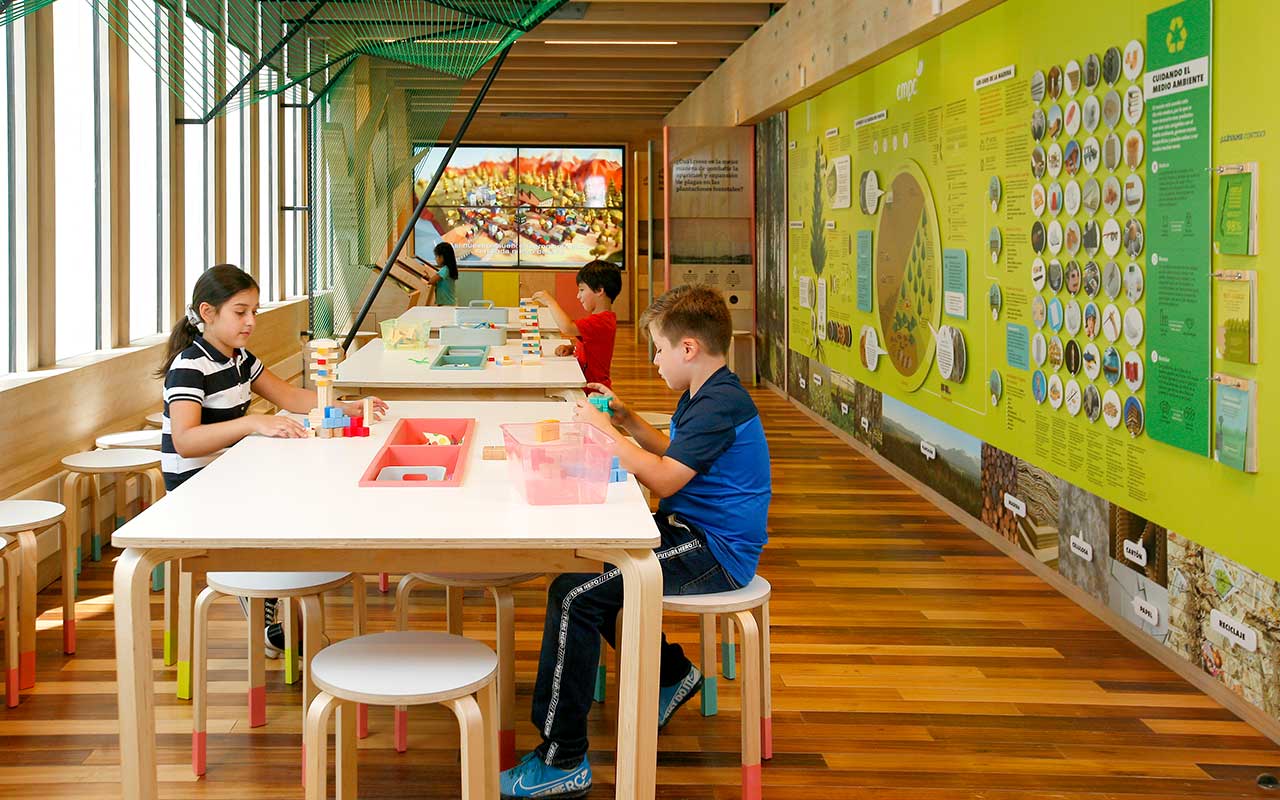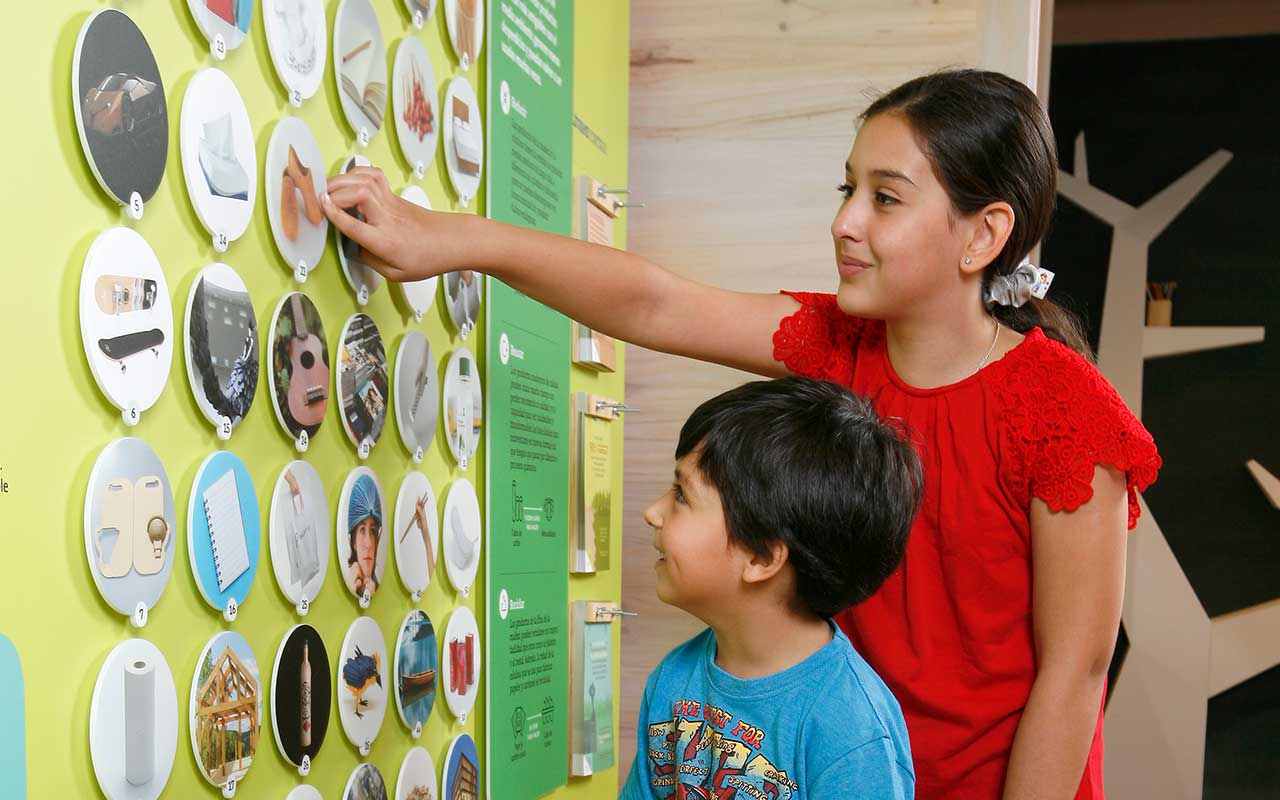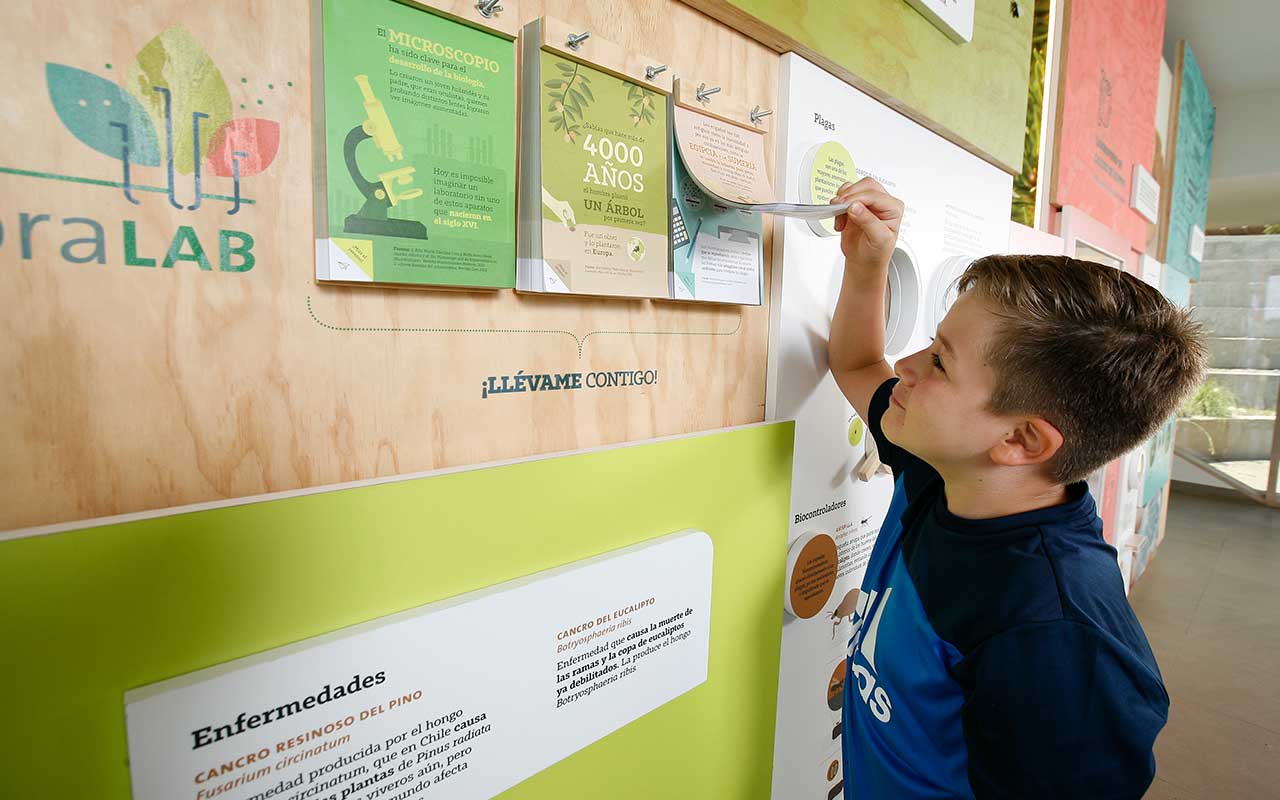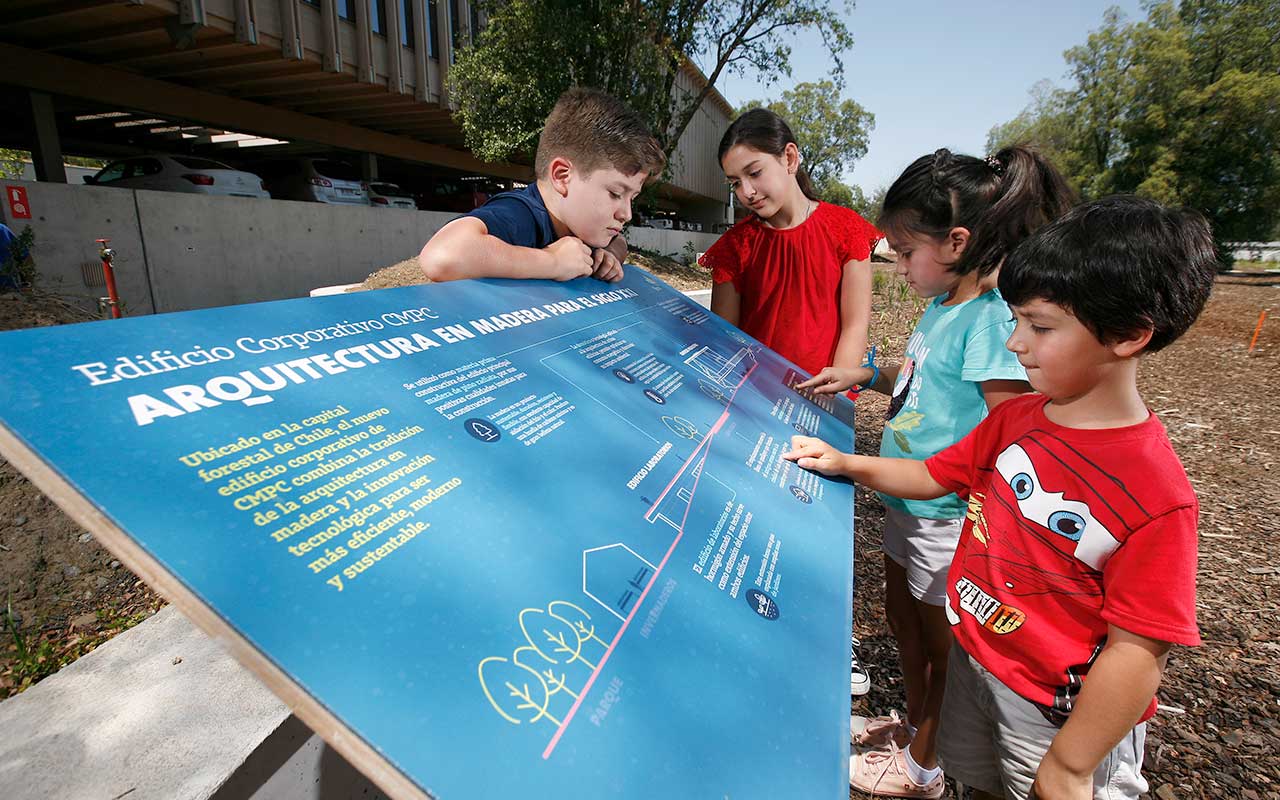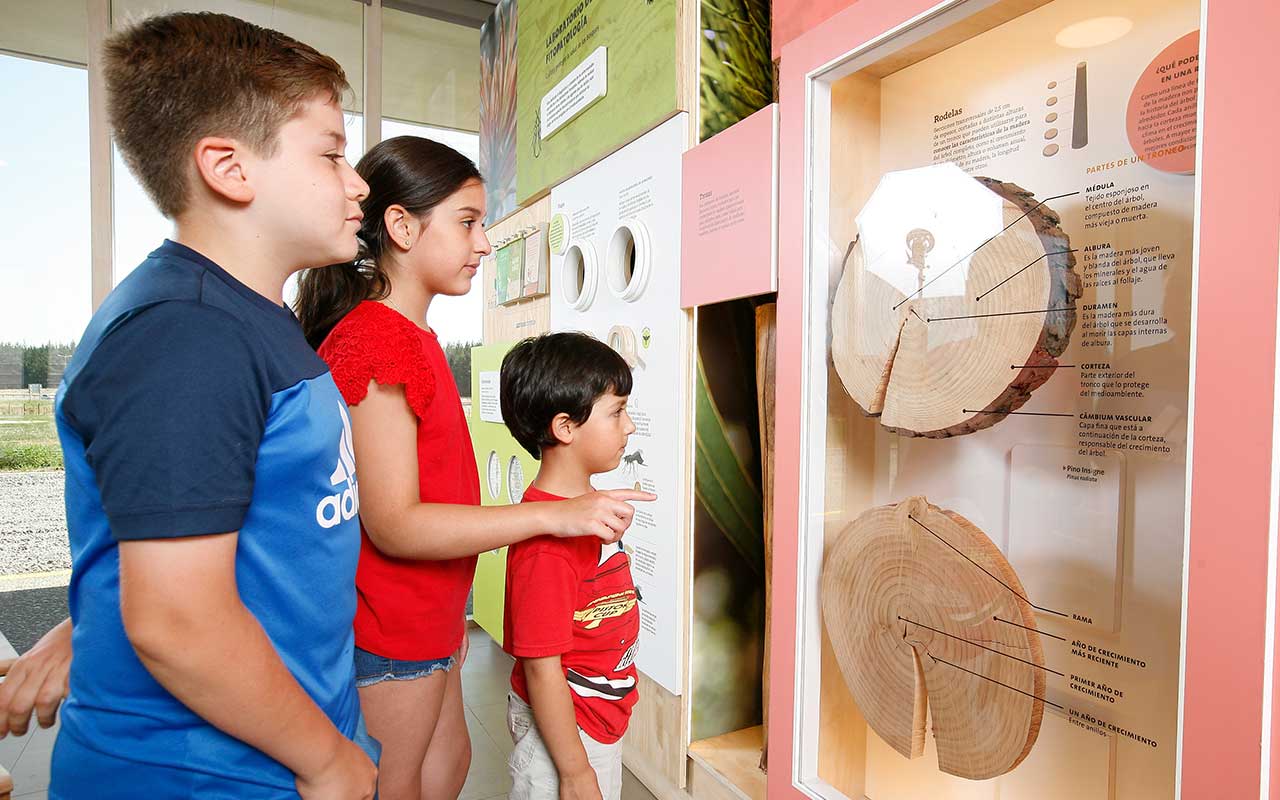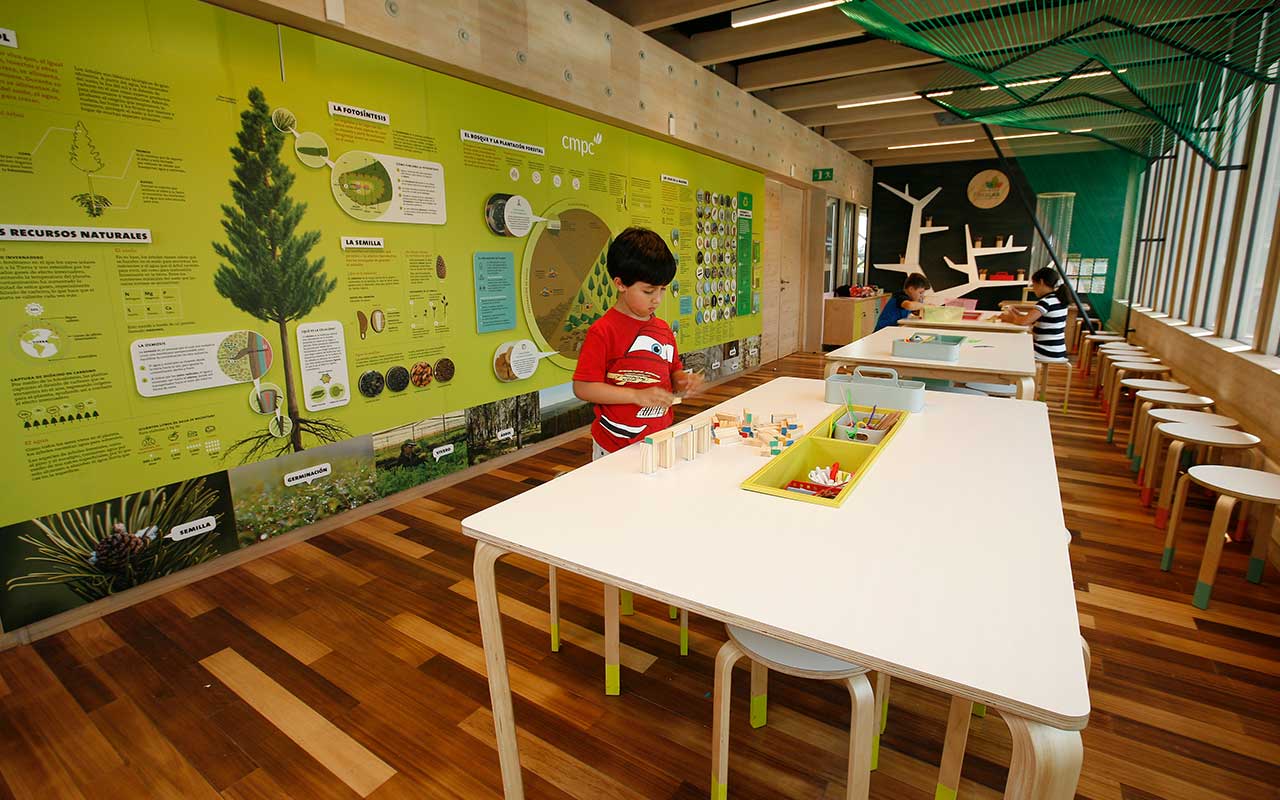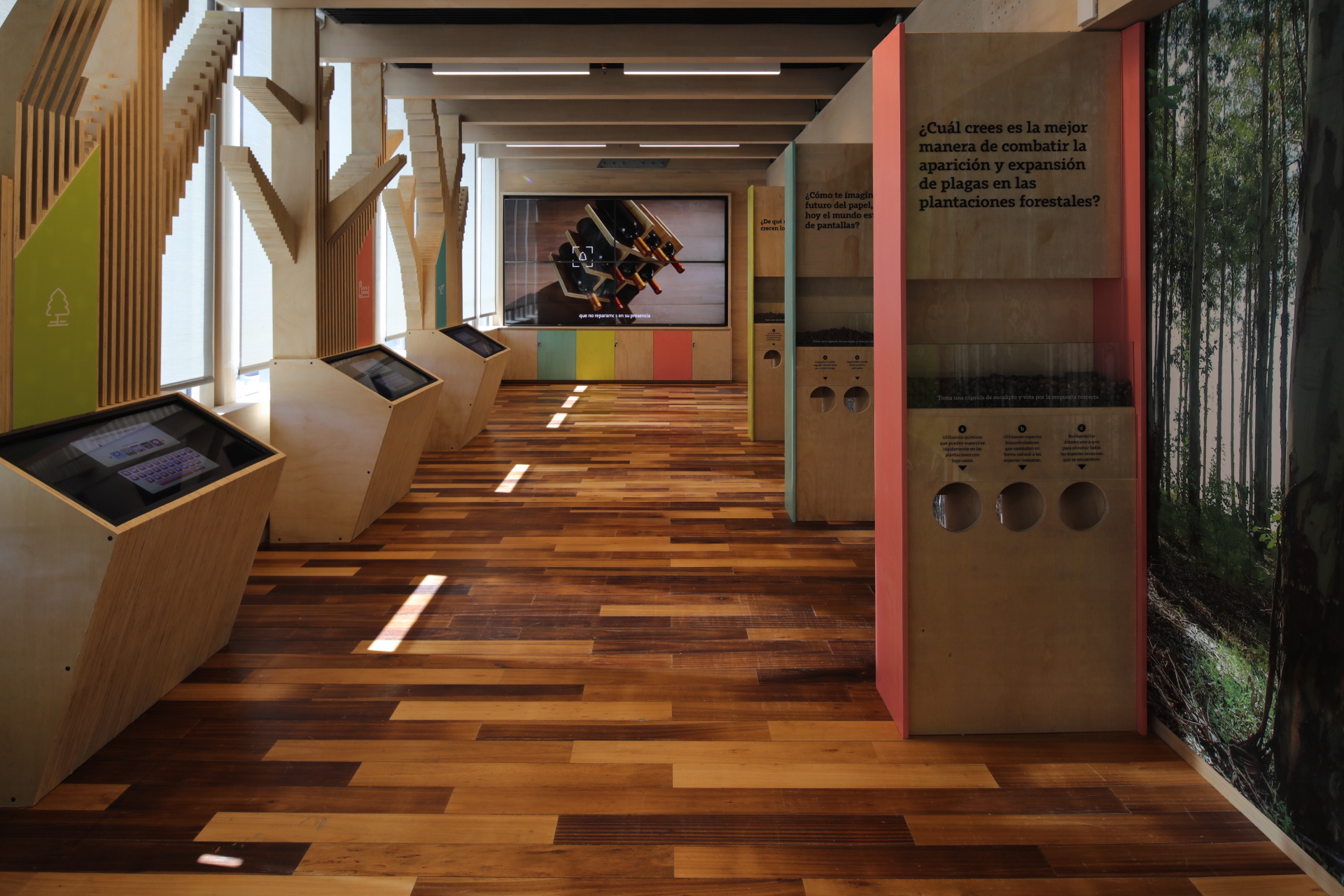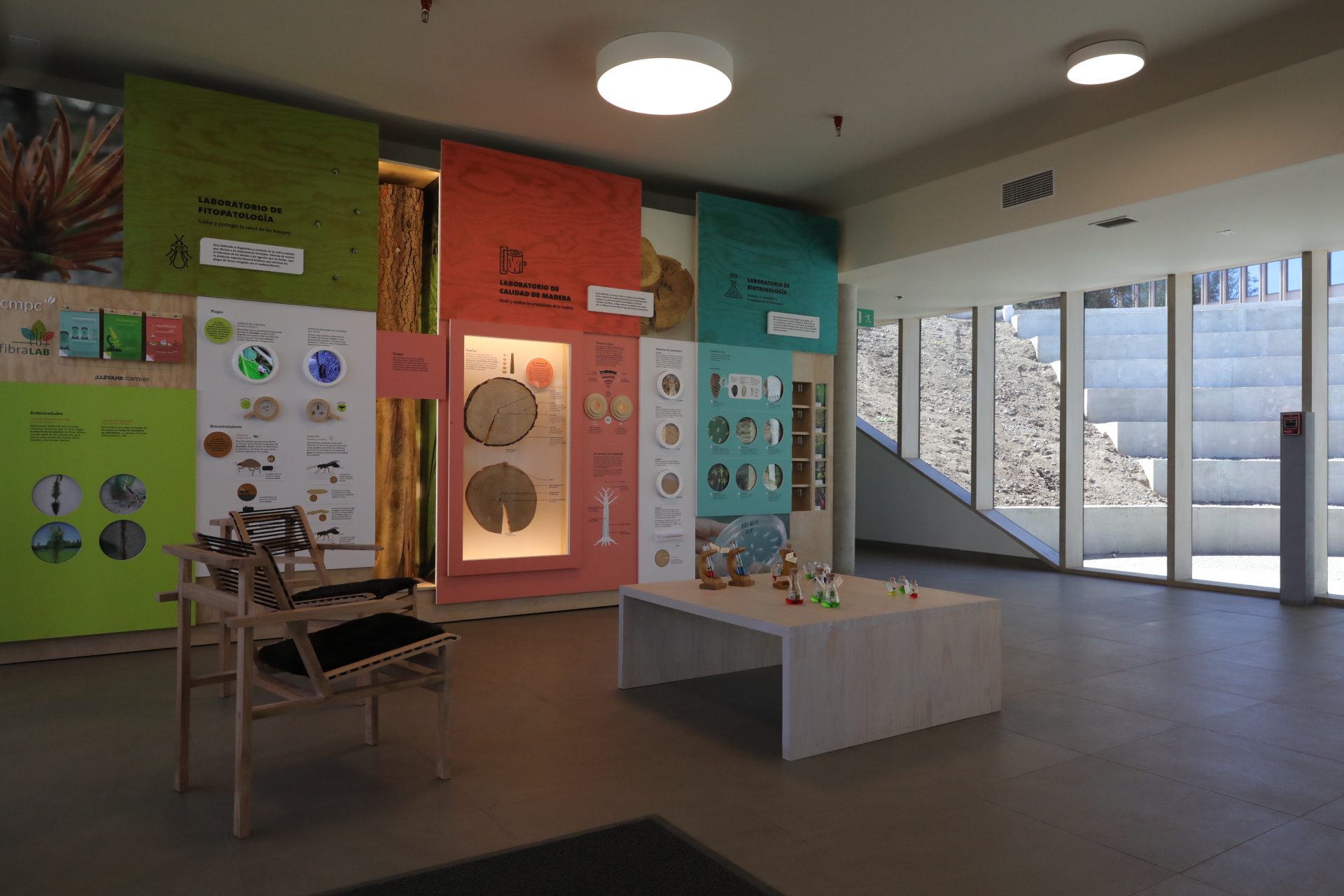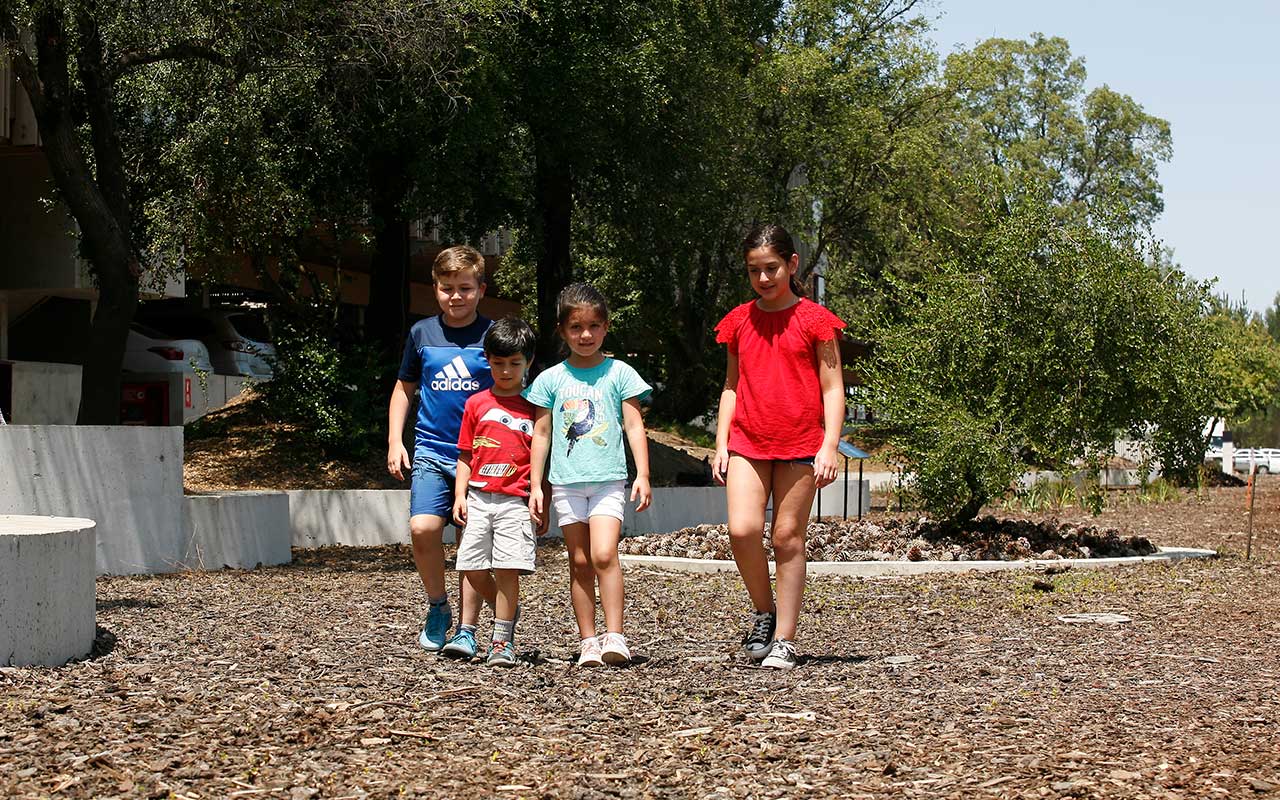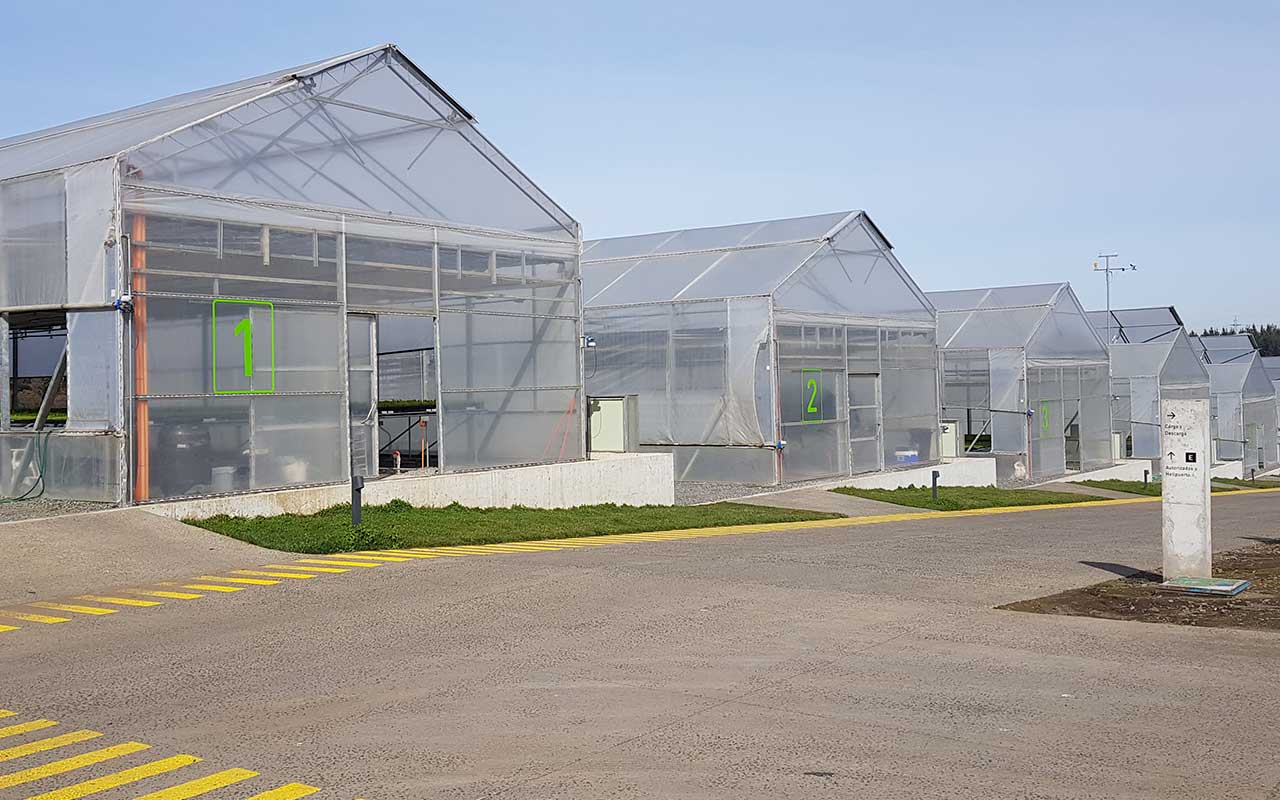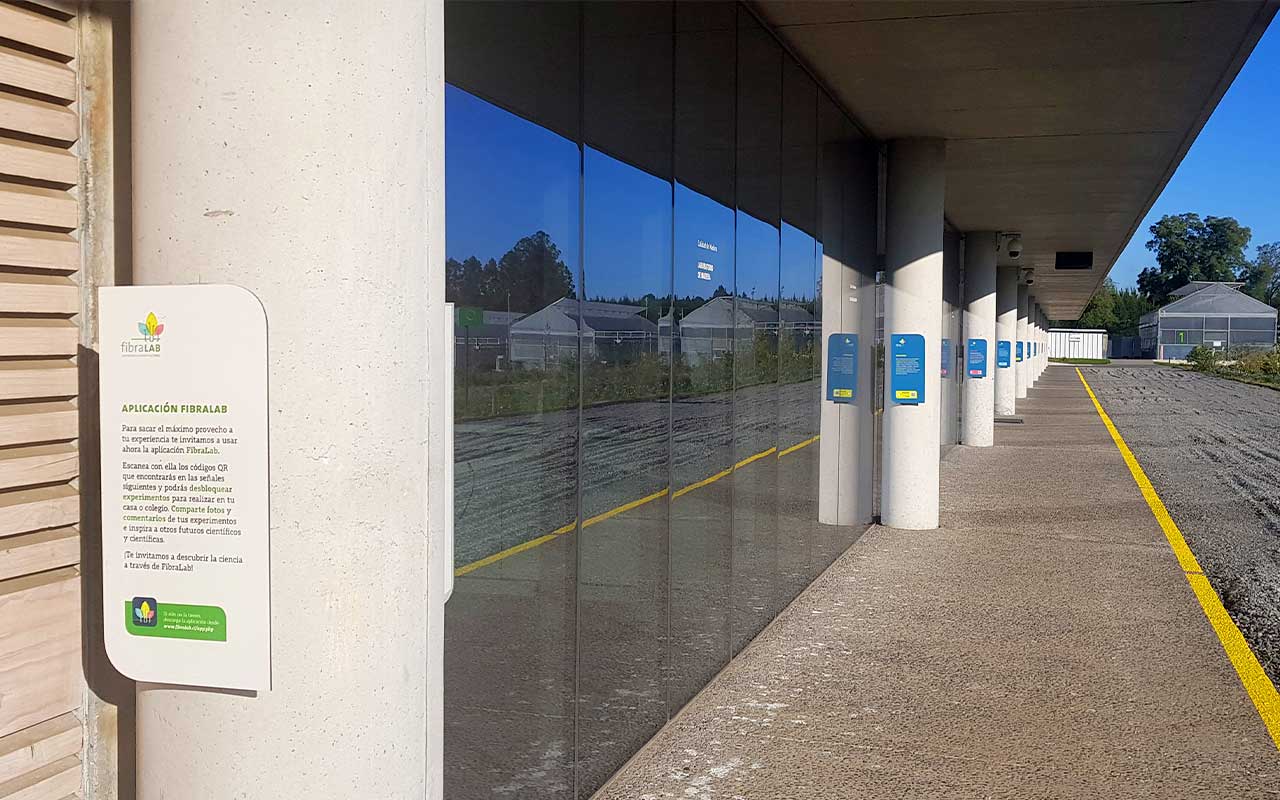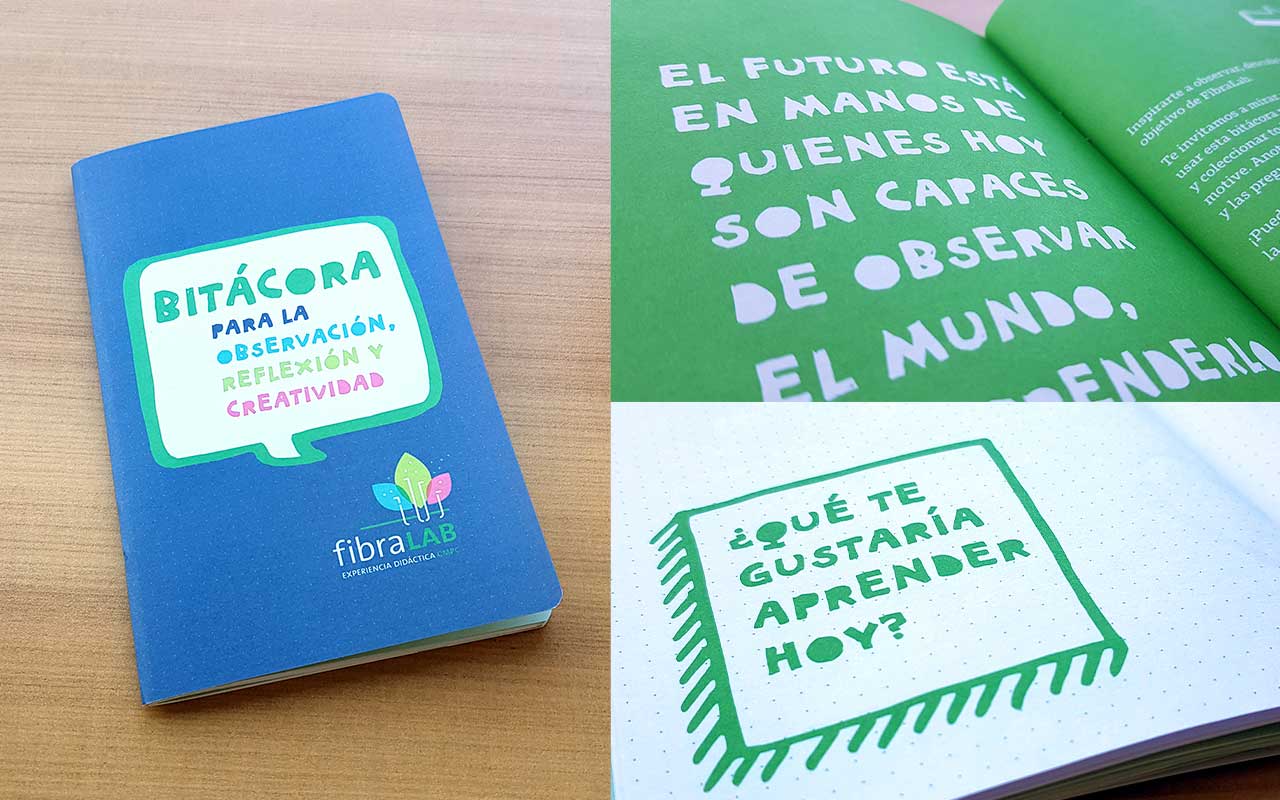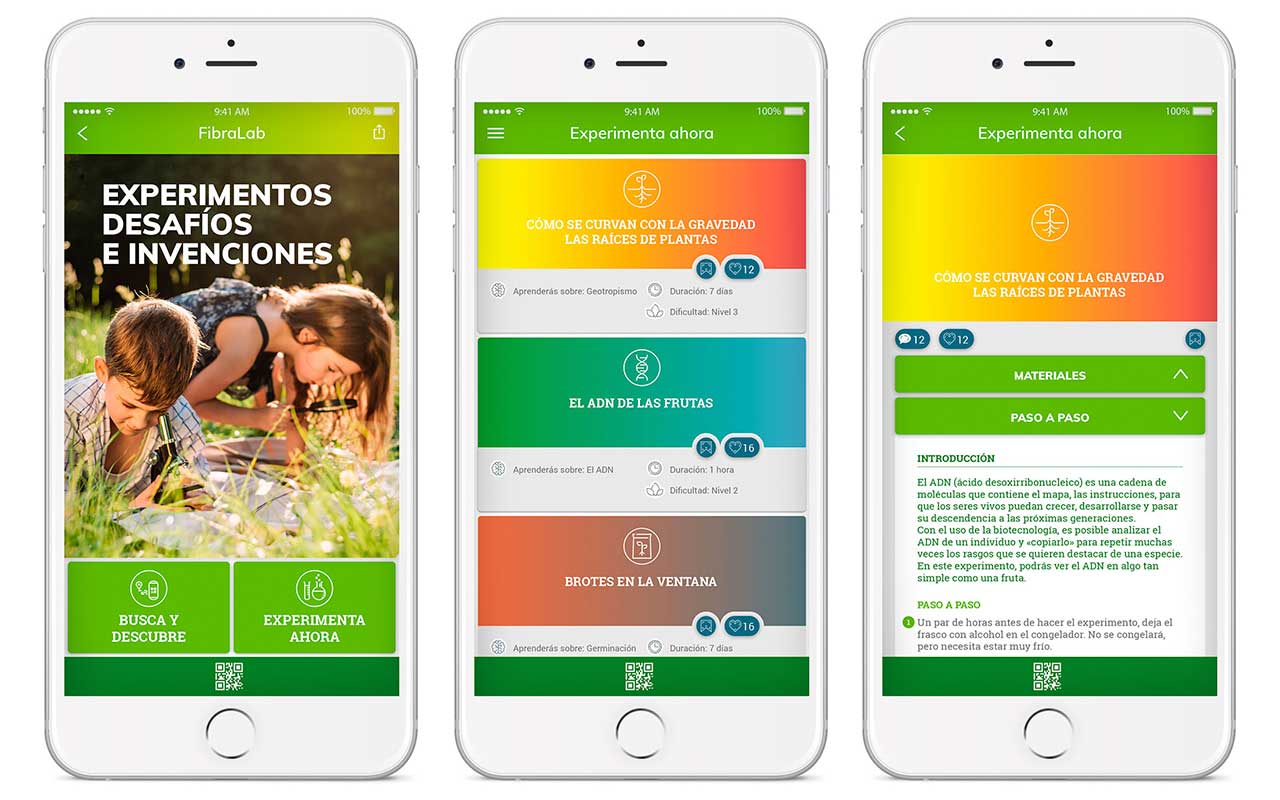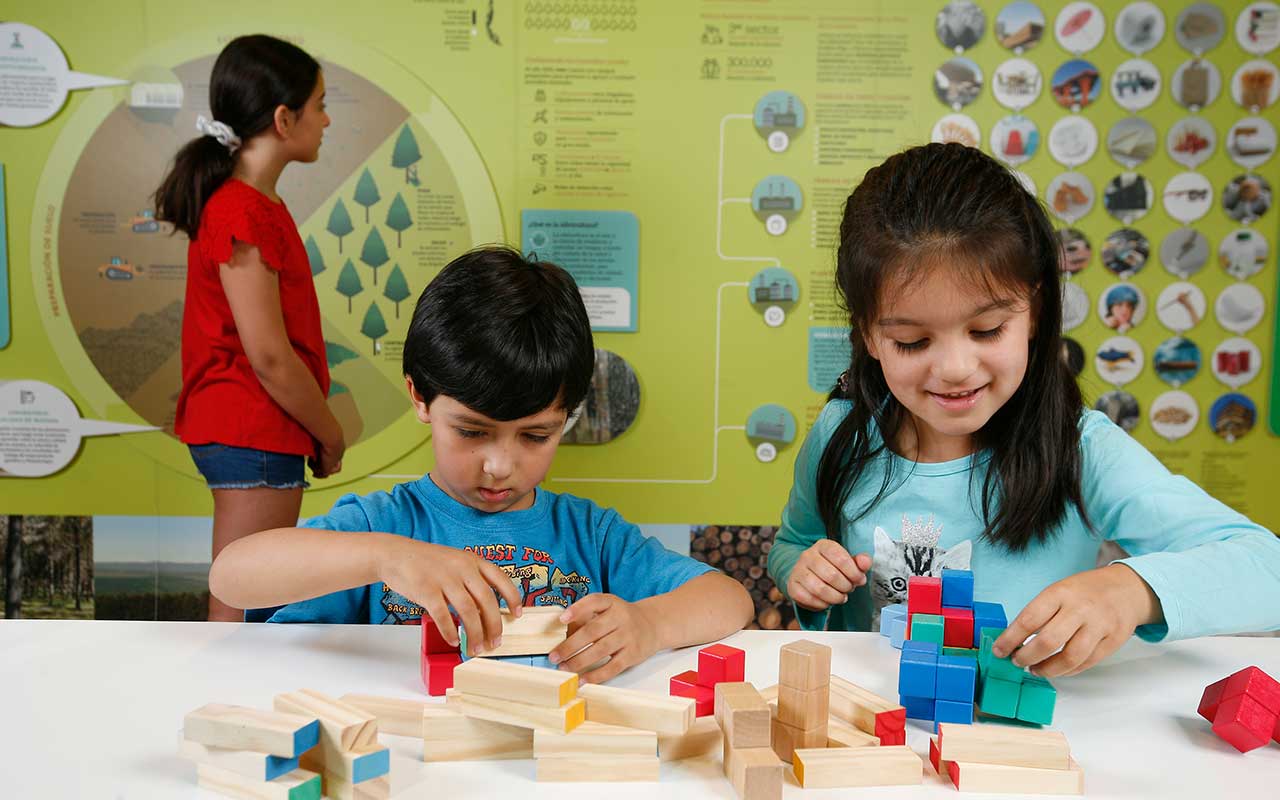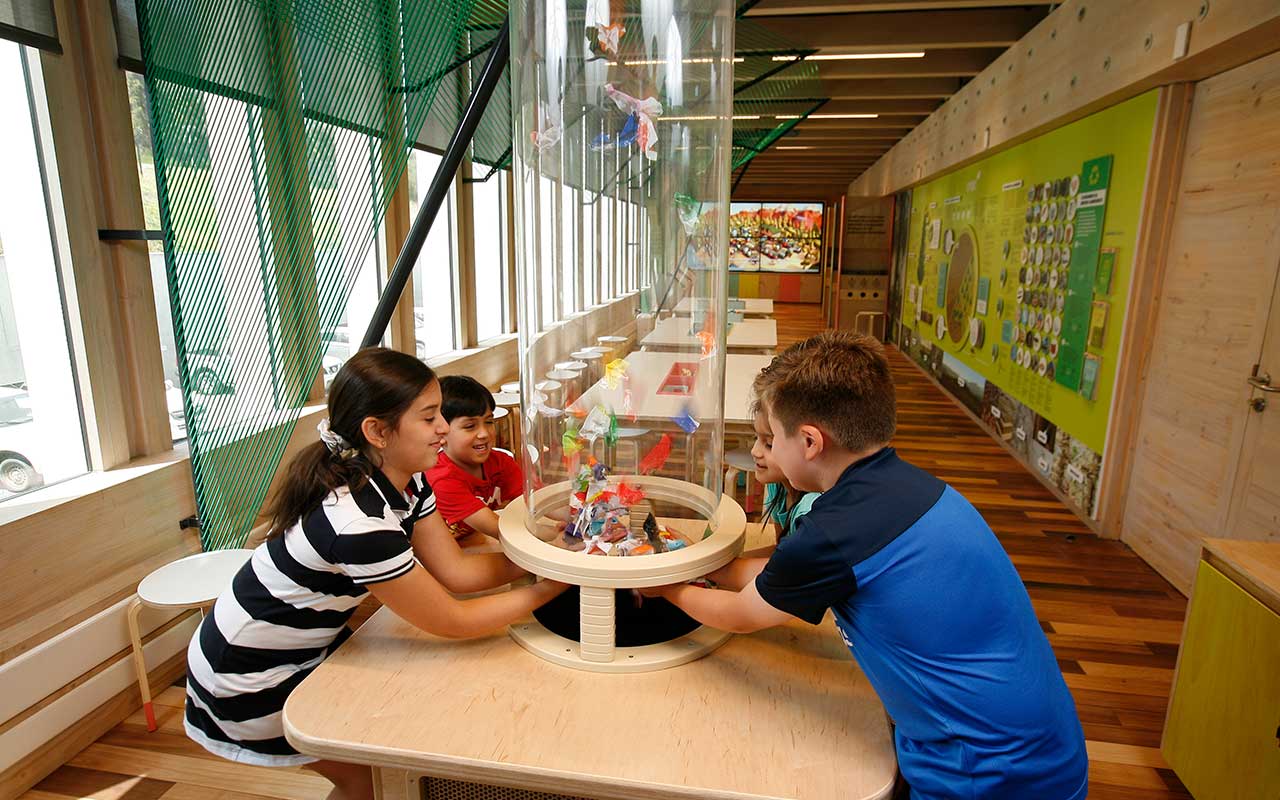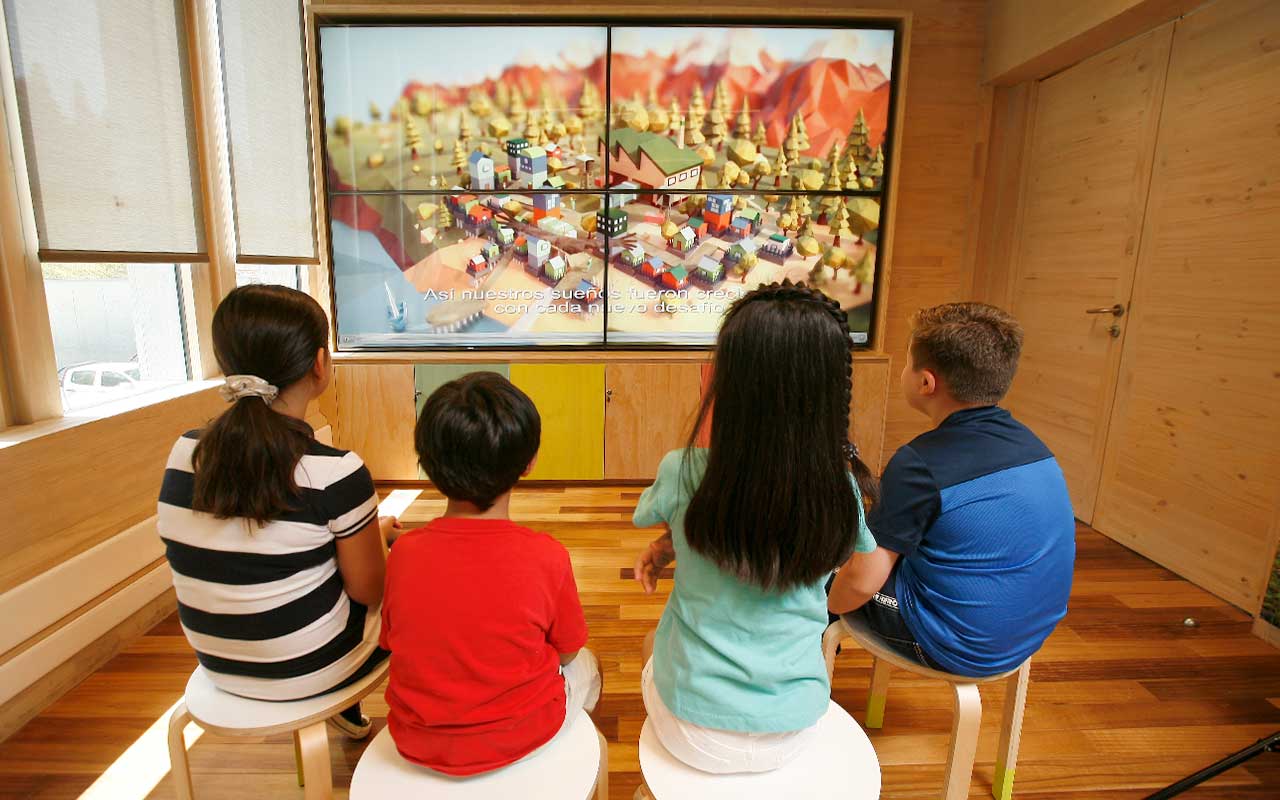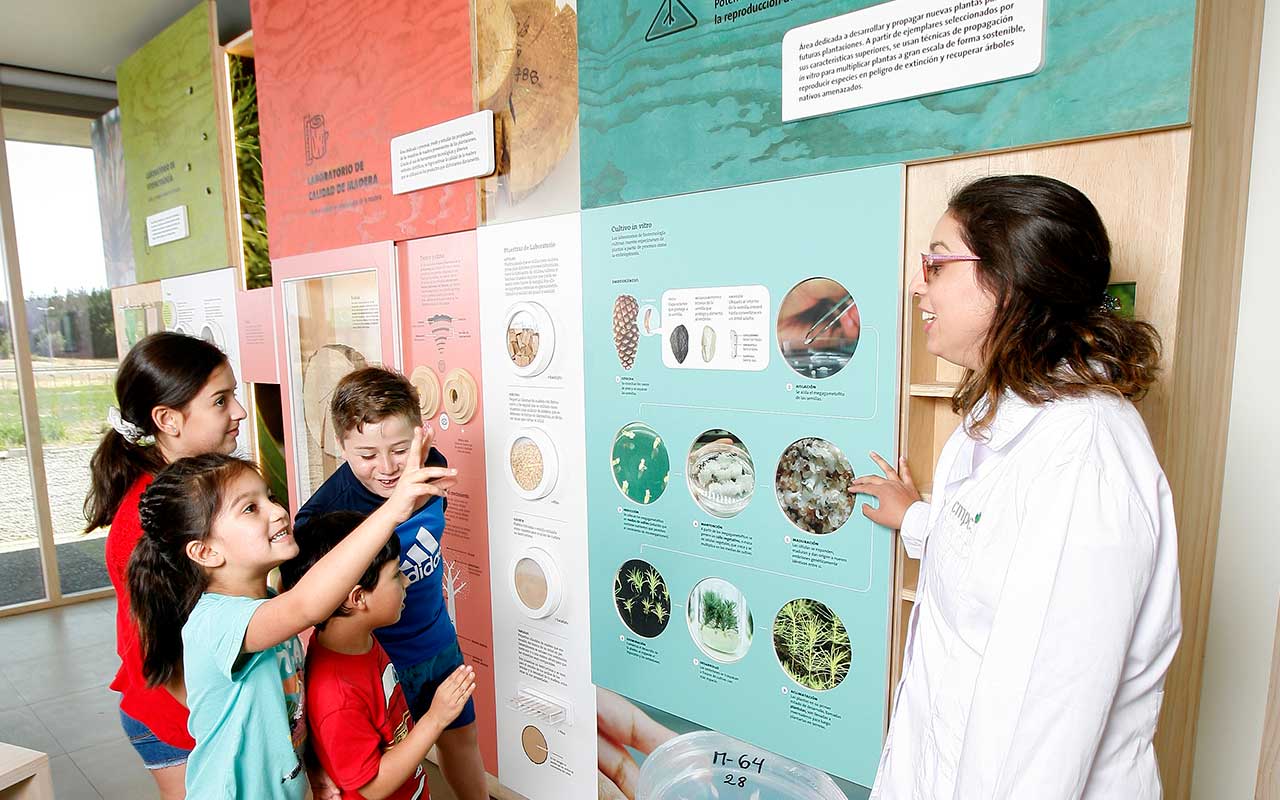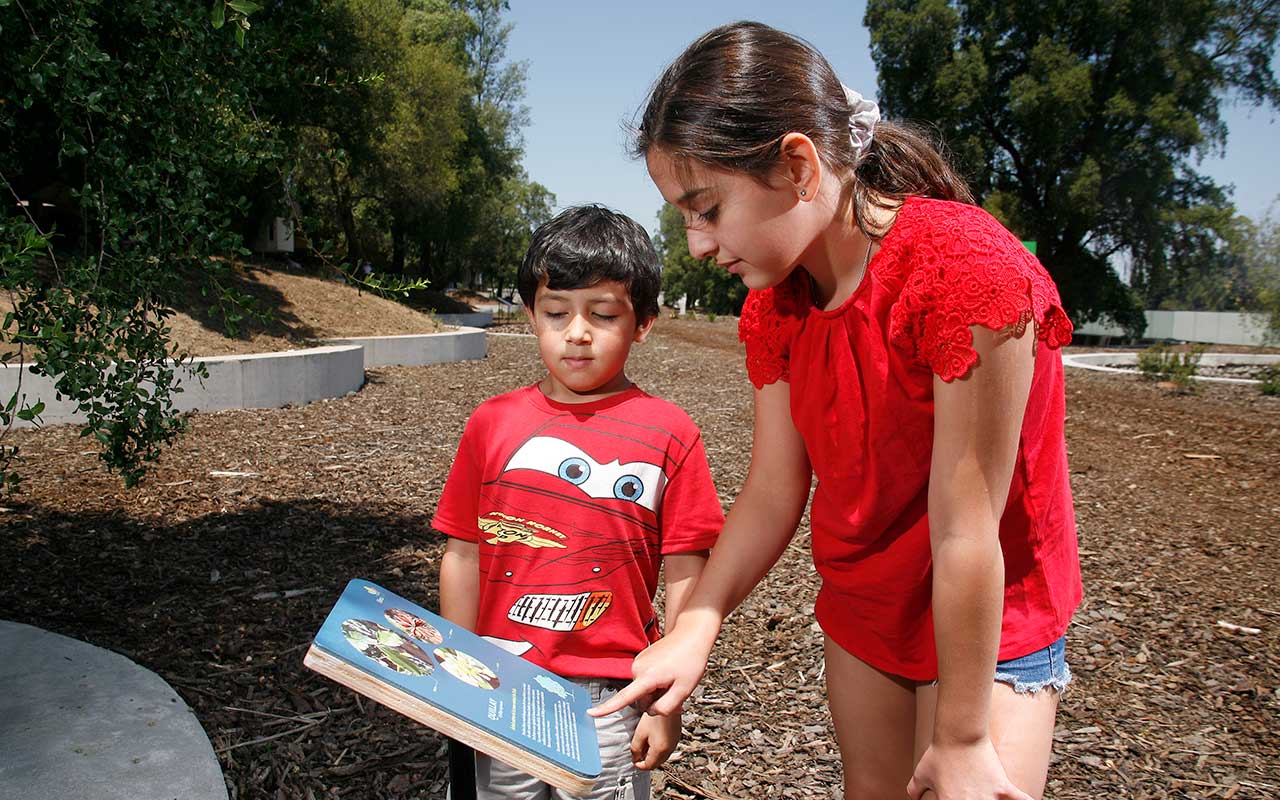FIBRALAB, TEACHING EXPERIENCE
Designing meaningful and binding educational experiences with the community
PROJECT DATA
CLIENT: CMPC
INDUSTRY: Forest
PROJECT: FibraLab, CMPC educational experience
LOCATION: Los Angeles, Biobío Region—Chile
YEAR: 2020
AREAS OF EXPERTISE: Design and brand identity, Strategic design, Experience design, Content development, Space design, Furniture design, User interface, Interaction design, Didactic design, Instructional design, Information architecture, Design Infographic, Digital design (web and app), Audiovisual design, Wayfinding, Museography
CHALLENGE
From the constant search for links with the community, CMPC raises the need to use its new corporate building in Los Angeles as a new approach channel and from there share its vision of the horizons of the Forestry Industry.
The challenge that is presented to us then, is to take the facilities designed for the operation of CMPC offices and laboratories and generate an articulating and binding space with the community, inviting it to enjoy eliminating relevant gaps in knowledge about the forestry industry and the significant development of CMPC in it.
PROJECT RECIPIENT
9) The main recipients are children and young people from 1st grade to 4th grade in the region or country, from educational establishments or other types of organizations; and the teachers of said establishments with a focus on natural sciences or subjects associated with forestry (who are the ones who can manage educational field visits).
Other secondary recipients are visitors from the community (neighboring families, families of workers; or visitors from companies, clients, potential clients, professionals).
PROJECT DEVELOPMENT
1. Immersive research
Main objective: Empathic inquiry
This first stage of research focused on the study and review of the contents of the forestry industry, with special emphasis on those developed by CMPC, and on the participatory observation of the strategic actors present in the future experience, placing special focus on the two main ones:
– Elementary and middle school students (1st grade to 4th grade).
– Teachers of educational establishments (with a focus on natural sciences, subjects particularly associated with forestry).
Thanks to this inquiry, the most critical needs, development opportunities and limitations were identified in the context of the challenge, which, in their synthesis, determined that:
From a more explicit and concrete perspective, it is observed from the students, a certain reluctance to this type of educational visits because they are perceived as “task disguised as a game”, but that “at least I get out of school”. And from the point of view of the teachers, that it is an instance “that does not think much of us when we have to bring this content to the classroom”, and that “it does not have good guides that really motivate my students”.
This is custom heading element
From a more latent perspective, key dimensions are defined for the development of the project, these are the level of:
– Knowledge in forestry industry
– Autonomy to carry out the didactic experience
– Motivation to learn these topics
– Availability of time to attend the didactic experience
– Performance in technological supports
A large part of the challenge was facing a great heterogeneity of users, thanks to the research we were able to define diverse profiles that are in a greater or lesser range within the dimensions mentioned above, where we can find children or young people with a lot of motivation to learn the themes of the experience, versus others who have zero interest or even rejection of these themes; or people who have a high management in technological supports, like others whose management is minimal, and also with the other dimensions.
2. Make sense and definition of the design and innovation opportunity
Main objective: Design synthesis
The result of this stage was the articulation of the latent needs of the various user profiles with the opportunity discoveries (insights) and the understanding of the design opportunity that exists is developed. This stage generated a conceptualization of the experience and a structured framework for design solutions.
Conceptualization of the experience
In this context, the generation of a comprehensive solution for the experience of the building’s visitors is proposed, whose framing for the design solutions were:
– The user experience must reside in connecting, empathizing and tuning in people with CMPC and its legacy of innovation in the forestry industry.
– Go beyond functionality, where utility and enjoyment of use are integrated, resulting in an experience that is memorable, intuitive, didactic and attractive to interact with.
– Expose to common people the processes associated with the forestry industry, with a focus on innovation, in a didactic, evocative and pregnant way, seeking a way to bring the community closer and connect, and thus reinforce CMPC’s position as a benchmark.
– Promote a truly inclusive learning experience without jeopardizing the autonomous development of the participant in the process.
– Balance between the specific needs of face-to-face accompaniment and facilitation, with autonomous moments without guidance or mediation.
Design Opportunity: Learning Experience Design
The experience that we sought to generate was determined, around the management of self-learning at 3 different levels of intervention (based on Le Boterf 2000):
Level 1 from doing: This level is translated into concrete and digital activities, where the user connects directly with the content through didactic supports and/or workshops.
Level 2 from define and describe: This level is reflected in spaces for reflection and analysis; Questioning of what is known and projection of hypotheses through didactic supports with specific questions that invite reflection.
Level 3 from metacognition: In this project, this level is translated to define the most sensitive contact points in the experience, in order to provide greater conceptual and theoretical support, together with didactic supports that extend the experience for further personal analysis.
3. Design of the solution proposal
Main objective: Generate new design spaces
Once the design problem has been identified and defined, we contemplate methods to conceptualize different design spaces that lead us to an effective solution. Through processes such as brainstorming, the aim is to achieve a better understanding of the problem while forming the design concept on which the final proposal will be based. This is where the synthesis process is fundamental, this time focused on how to turn the fusion and connection of multiple ideas into something tangible.
Making the conceptual proposal visible, the first step was the design of the graphic line of the project, which considers the definition of style and layout/composition of the complete graphic system, applied to all the pieces and supports of the project; definition of formats by typology, materials and layout in space, in harmony with the architectural project and its finishes; development of brand image, iconography, color range and associated production processes; and the definition of appropriate typographic families for the didactic experience with reading orders that allow a functional use by future users.
Very relevant was the content generation, development and editing stage for the complete experience and future interaction actions. The story that guides the didactic experience was developed around three guidelines derived from the aforementioned concept of transformation:
a) Resources (raw material).
b) Processes (raw material transformation processes).
c) Solutions (evolution and potential of wood fiber).
To give body to the content, a system of supports, concrete and digital, was developed so that the experience can be carried out, addressing the various dimensions and types of content, contemplating different forms of interaction with them and thinking in each case, what they were. the ideal supports to transmit and/or interact with the different types of content.
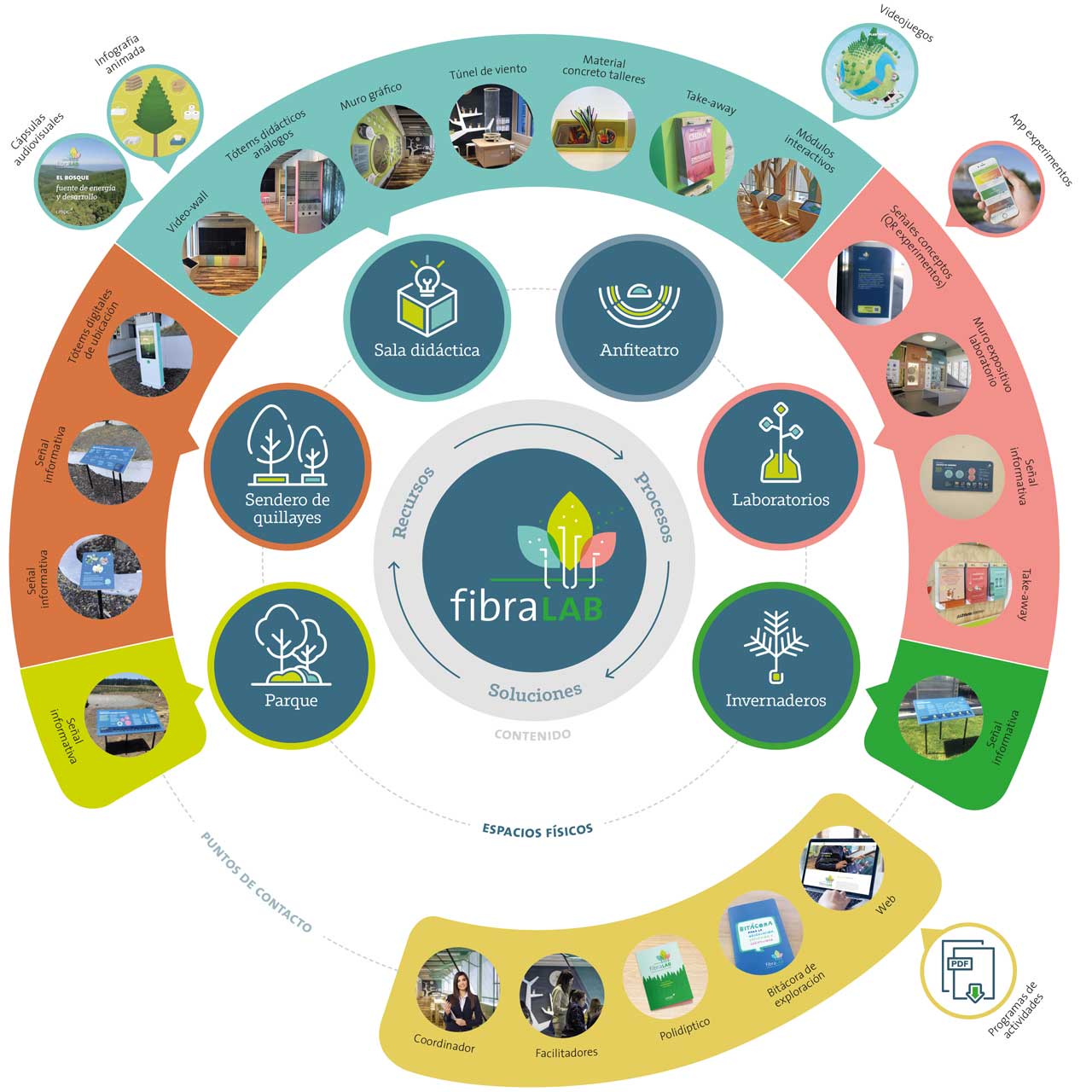
4. Experimentation, prototyping and testing
Main objective: Hypothesis validation
The experimentation stage is critical for determining the validity of hypotheses and assumptions, exploring solution options, and learning through failure about what might not work.
From mock-ups to scale models and 1:1 materiality, of all the supports included in the system (both concrete and digital) were developed. Given the heterogeneity of users who would visit the experience, testing with users of different ages was important, due to their morphological (height, reach, etc.) and socio-cognitive (age, cultural context, development, etc.) attributes.
Considering that this project integrates a multiplicity of concrete and digital supports, many of which had to be purchased and others produced to order, the suppliers are a very important variable to consider and define. Fortunately, we have teams with a lot of experience and high performance, among which we highlight N.O.T. (Not Ordinary Things) and Type, Architecture and Design (for the development of the infrastructure and furniture) and Mezcla (for the technical development of the interactives).
5. Commissioning
Main objective: Launch, refinement and difusión
Once the prototyping phase is finished, the solution is launched as a preliminary version during the official inauguration of the CMPC building in Los Angeles. This instance was fundamental, since it allowed the solution to be tested in the real conditions of use. It was extremely important to collect data before and after this event, to measure the performance of the implemented solution, and thus find and solve usability problems and be able to refine it.
This pre-launch was a fundamental requirement to meet the objective of optimizing the solution and thus promote (i) a better didactic experience for all the actors involved, and (ii) proyectar la difusión y posible escalamiento de la experiencia en otras instancias de CMPC.
SOLUTION
The final solution is constituted as a didactic experience of activities, tours and games in which visitors —children and young people— approach the knowledge of the forestry industry and the environment in an interactive and sensory way, through multiple supports, formats, practical spaces and activities —both tangible and digital— that seek to create a memorable, intuitive, didactic and attractive experience to interact and learn, opening windows of possibilities and imagination.
The final solution is constituted as a didactic experience of activities, tours and games in which visitors get closer to the knowledge of the forestry industry and the environment in an interactive and sensory way.”
The The face-to-face experience includes tours of different areas of the CMPC facilities in Los Angeles: interior spaces such as the didactic room, where through interactive activities it will be possible to learn about the different areas of the forestry industry; modern laboratories, where scientists apply cutting-edge technology to improve and protect trees; and outdoor spaces such as greenhouses, where the sprouts are planted so that they grow healthy and strong; and the quillayes trail, an esplanade with original native species from the old access to the city of Los Angeles, and the park, where native tree species are in the process of growing.
In addition, instances of extension of the experience were developed, to take it beyond the physical space of the CMPC building and the moment of the visit. These instances seek to promote the autonomous “doing”, the observation and personal reflection of the participants, the elements developed for this were: the observation log, a gift given at the end of the experience, a notebook dedicated to recording observation, reflection and creativity, is an invitation to be inspired, observe, discover and create (main objectives of the experience FibraLab); the FibraLab application that contains experiments to carry out at home and others to unlock more during the visit to the building, with the possibility of sharing comments or results; and the activity programs, which are suggestions of activities related to the contents of the experience for teachers to carry out in the classroom with their students.
The experience surprises the visitor with the possibilities of transforming the fiber through the forestry industry, presents the life of the trees from the seed, going through the development of the best specimens thanks to science and technology, followed by the management of the forests so that they grow healthier and stronger while taking care of the environment, and the production processes that transform them in multiple ways to transform them into the thousands of products we use daily and opening our minds to the future possibilities of wood.
